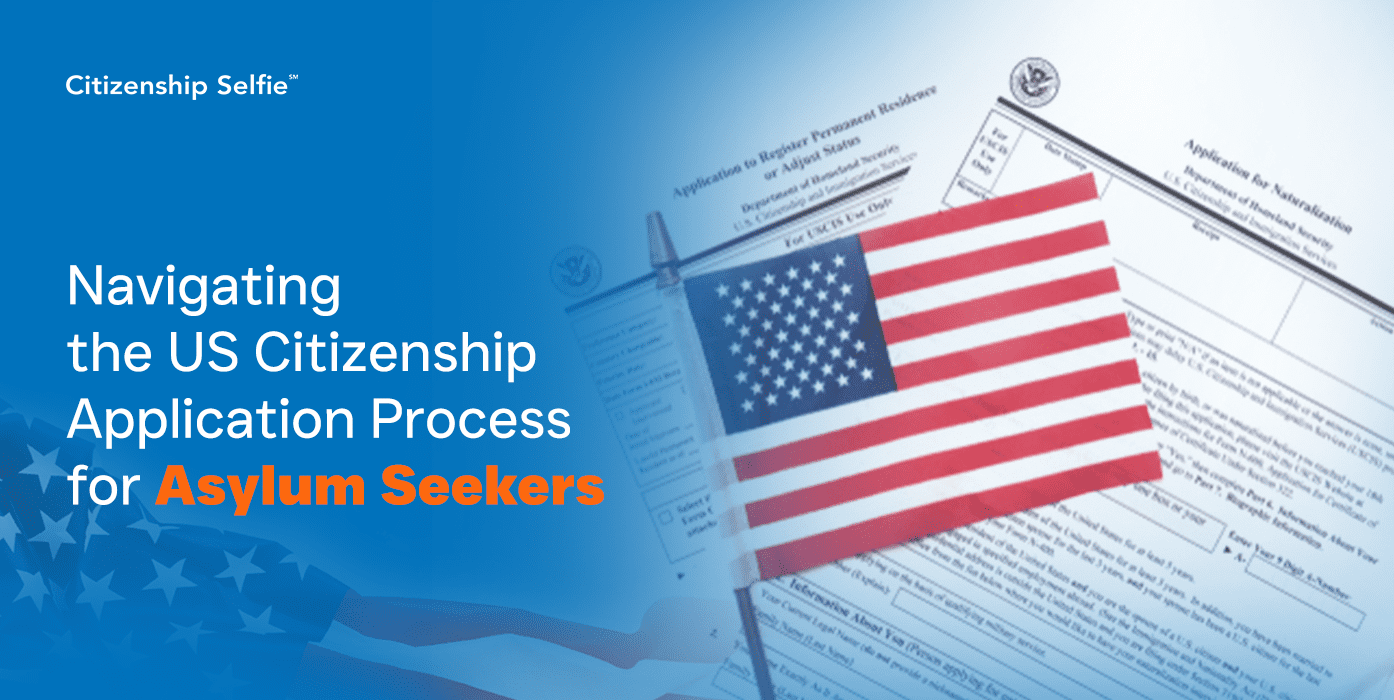Asylum seekers nyc who have fled their home countries due to persecution or fear of harm often find solace and protection in the United States. While being granted asylum offers them temporary protection status, obtaining US citizenship holds even greater significance. US citizenship provides a sense of permanence, security, and access to various benefits and rights.
However, asylum seekers nyc’ path to US citizenship has challenges and complexities. The US citizenship application process involves a series of steps and requirements that can be daunting for individuals who have already experienced trauma and upheaval. Navigating the application process successfully requires a thorough understanding of the legal requirements, meticulous preparation, and, often, the assistance of legal professionals or immigration services.
This article will delve into the intricacies of the US citizenship application process for asylum seekers nyc. We will explore the significance of US citizenship and its benefits while shedding light on the hurdles applicants may face. By understanding the process and learning strategies to overcome challenges, asylum seekers can navigate this path more confidently and increase their chances of obtaining US citizenship.
Understanding Asylum Seekers NYC and Their Eligibility
Asylum seekers nyc have fled their home countries due to well-founded fear of persecution based on race, religion, nationality, political opinion, or membership in a particular social group. They seek protection in another country, such as the United States, where they can find safety and freedom from the harm they face or fear in their homeland. Asylum seekers often embark on perilous journeys, leaving behind everything they know and love for a better and safer life.
Legal requirements for asylum in the United States
Applicants must meet certain legal requirements to be eligible for asylum in the United States. These requirements include:
- The applicant must be physically present in the United States or at a port of entry.
- The applicant must apply for asylum within one year of arrival unless they can demonstrate exceptional circumstances or changed circumstances that led to the delay.
- If returned to their home country, the applicant must establish a well-founded fear of persecution or harm.
- The persecution or harm faced or feared must be based on one of the five protected grounds: race, religion, nationality, political opinion, or membership in a particular social group.
While asylum provides temporary protection to individuals fleeing persecution, it is important to understand that obtaining US citizenship is a separate process. Asylum is a legal status granted to those who meet the eligibility requirements and provides certain benefits, such as employment authorization and access to public benefits. However, it does not automatically lead to US citizenship. Once an individual has been granted asylum, they can eventually become eligible to apply for lawful permanent residence (green card) after one year. Green card holders can then pursue US citizenship through the naturalization process, which involves meeting additional requirements such as residency, good moral character, and passing a civics and English language test. US citizenship offers more permanent status, voting rights, and other benefits that asylum alone does not provide.
Overview of the US Citizenship Application Process
The naturalization process is the pathway to US citizenship for eligible immigrants, including asylum seekers. It involves several key steps, which include:
- Determining eligibility: Asylum seekers nyc must meet specific eligibility criteria, such as being granted asylum for at least one year and maintaining continuous residence in the United States.
- Filling out Form N-400: The applicant must complete and submit Form N-400, the Application for Naturalization, accurately and thoroughly. This form collects personal information and background details.
- Biometrics appointment: Applicants will receive a notice for a biometrics appointment after applying. This involves providing fingerprints, photographs, and a signature for background checks.
- Naturalization interview: Applicants will be scheduled for an interview with a United States Citizenship and Immigration Services (USCIS) officer. During the interview, the officer will review the application, test the applicant’s knowledge of English and civics, and assess their eligibility for citizenship.
- Oath of Allegiance: If approved, the final step is taking the Oath of Allegiance at a naturalization ceremony. This oath signifies the applicant’s commitment to the United States and its laws.
Requirements and Documents Needed for Asylum seekers NYC
Asylum seekers applying for US citizenship must fulfill certain requirements, which generally include:
- Holding a valid and unexpired green card: Asylum seekers who have been granted asylum for at least one year can apply for a green card.
- Continuous residence: Asylum seekers must have maintained continuous residence in the United States for the required period of time (usually five years) preceding the naturalization application.
- Physical presence: Applicants must also demonstrate that they have been physically present in the United States for a certain period, typically half of the required residency period.
- Good moral character: Asylum seekers must establish that they have maintained good moral character during the statutory period before their application.
- English language proficiency and knowledge of US civics: Applicants must pass an English language test, which evaluates their ability to read, write, and speak English. They must also pass a civics test, which assesses their knowledge of US history and government.
The importance of gathering evidence and supporting documentation
Gathering evidence and supporting documentation is crucial for a successful US citizenship application. Asylum seekers nyc should collect documents that validate their continuous residence, physical presence, and good moral character. These may include:
- Proof of residence: Rental agreements, utility bills, bank statements, or employment records demonstrating residency.
- Travel records: Copies of passport pages, boarding passes, or other documents that prove the applicant’s travel history.
- Employment records and tax returns: Documents verifying employment history and income tax payments.
- Evidence of community involvement: Letters from employers, community leaders, or organizations attest to the applicant’s involvement in community activities.
- Certificates of completion: Certificates from English language courses or civic integration programs that showcase the applicant’s efforts to learn English and understand US civics.
Navigating the US Application Process
Here is the Step-by-step guide to the US citizenship application process:
-
Filing of your application documents.
- Understand the eligibility requirements: Review the specific requirements for asylum seekers seeking US citizenship and ensure you meet them.
- Obtain and fill out Form N-400: Access the Application for Naturalization (Form N-400) and complete it accurately and thoroughly. Seek clarification if you have any questions.
- Prepare supporting documents: Gather the required documentation and evidence to support your application, such as proof of residence, employment records, tax returns, and community involvement certificates.
- Review and double-check the application: Carefully review the completed form, ensuring that all information is accurate and supporting documents are included.
- Apply: Send the completed application, the necessary filing fee, and any additional required documentation to the appropriate USCIS address.
-
Filling out the application form accurately and thoroughly
- Read the instructions carefully: Familiarize yourself with the instructions provided with Form N-400 to understand the requirements and specific details.
- Take your time: Fill out the form accurately, providing complete and truthful information. Pay attention to details such as dates, names, and addresses.
- Seek assistance if needed: If you are uncertain about any questions or requirements, seek help from legal professionals or immigration services to ensure the form is filled out correctly.
-
Submitting required documentation and evidence
- Organize your documents: Arrange the supporting documentation in an organized manner to make it easier for USCIS officers to review.
- Make copies: Keep copies of all documents submitted for your records.
- Translate documents if necessary: If any of your supporting documents are not in English, provide certified translations to accompany them.
-
Attending biometrics appointments and interviews
- Respond promptly: If you receive a notice for a biometrics appointment or an interview, respond promptly and attend as scheduled.
- Prepare for the appointment or interview: Review your application and supporting documents to refresh your memory. Be prepared to provide additional information if requested.
-
Preparing for the naturalization test and interview
- Study the English language and civics: Review the materials provided by USCIS to prepare for the English language and civics tests.
- Practice interviewing skills: Familiarize yourself with the questions asked during the interview and practice answering them.
-
The importance of seeking legal assistance or immigration services
- Consult with legal professionals: Consider seeking the guidance of immigration lawyers or accredited representatives specializing in citizenship applications.
- Access immigration services: Utilize community organizations, non-profit agencies, or immigration clinics that offer assistance with citizenship applications. They can provide valuable support throughout the process.
-
Common challenges and potential roadblocks during the process
- Language barriers: If English is not your first language, it may be challenging to understand the application forms and interview questions. Seek language assistance or interpretation services when necessary.
- The complexity of the process: The US citizenship application process can be complex and overwhelming. Stay organized, seek guidance, and ask for help navigating the various requirements.
- Delays and backlogs: Understand that processing times can vary, and there may be delays due to high volumes of applications. Patience is key, and stay informed about the status of your application.
By following a step-by-step approach, filling out the application accurately, gathering and submitting the required documentation, and seeking legal assistance, asylum seekers can navigate the US citizenship application process more effectively. Addressing common
Final Note
US citizenship is crucial for asylum seekers nyc, offering security, stability, and a sense of belonging. Navigating the citizenship application process unlocks benefits such as the right to vote, access to better job opportunities, education, and social services. It protects against deportation and the freedom to travel with a US passport. Despite challenges, seek legal assistance, gather required documents, and remain patient. Your journey to citizenship showcases strength and determination, contributing to the tapestry of American society. We applaud your courage and wish you success in pursuing US citizenship.






